CBSE PORTAL : (Download) CBSE Class-12 Sample Paper And Marking Scheme 2017-18 : Physics | |
- (Download) CBSE Class-12 Sample Paper And Marking Scheme 2017-18 : Physics
- (Download) CBSE Class-10 Sample Paper And Marking Scheme 2017-18 : (Limboo)
- NCERT English Question Paper (Class-9)
- CBSE Downloads: Syllabus, Projects, Guess Papers, Question Bank, Answer Keys, NCERT e-Books & much more..
- Download Free e-Books for CBSE Students
- CBSE Class-12 Syllabus 2018-19 (Biology)
- CBSE Class-12 Syllabus 2018-19 (Chemistry)
- CBSE Class-9 Syllabus 2018-19 (Carnatic Music)
- CBSE Class-9 Syllabus 2018-19 (Social Science)
- CBSE Class-12 Syllabus 2018-19 (Physics)
| (Download) CBSE Class-12 Sample Paper And Marking Scheme 2017-18 : Physics Posted: 24 May 2018 10:47 PM PDT | |||||||||||||||||||||||||||||||||||||||||||||||||||||||||||||||||||||||||
| (Download) CBSE Class-10 Sample Paper And Marking Scheme 2017-18 : (Limboo) Posted: 24 May 2018 10:46 PM PDT (Download) CBSE Class-10 Sample Paper And Marking Scheme 2017-18 :(Limboo)
Click Here To Download Full Sample PaperClick Here To Download Full Marking SchemeCBSE (Class X) Previous Year Papers Printed Books<<Go Back To Main PageCourtesy:CBSE | |||||||||||||||||||||||||||||||||||||||||||||||||||||||||||||||||||||||||
| NCERT English Question Paper (Class-9) Posted: 24 May 2018 10:11 PM PDT NCERT English Question Paper (Class-9)Chapter 1 The Fun they HadQuestion 1: 1. Find the sentences in the lesson which have the adverbs given in the box below. awfully sorrowfully completely loftily carefully differently quickly nonchalantly 2. Now use these adverbs to fill in the blanks in the sentences below. (i) The report must be read __________ so that performance can be improved. 3. Make adverbs from these adjectives. (i) angry __________ (ii) happy __________ Question 1: Answer these questions in a few words or a couple of sentences each. 1. How old are Margie and Tommy? Question 2: Answer the following with reference to the story. 1. "I wouldn't throw it away." (i) Who says these words? 2. "Sure they had a teacher, but it wasn't a regular teacher. It was a man." (i) Who does 'they' refer to? Question 3: Answer each of these questions in a short paragraph (about 30 words). 1. What kind of teachers did Margie and Tommy have? Question 4: Answer each of these questions in two or three paragraphs (100 − 150 words) 1. What are the main features of the mechanical teachers and the schoolrooms thatMargie and Tommy have in the story? Chapter 2 The Sound of MusicQuestion 1: Answer these questions in a few words or a couple of sentences each. 1. How old was Evelyn when she went to the Royal Academy of Music? Question 2: Answer each of these questions in a short paragraph (30 - 40 words). 1. Who helped her to continue with music? What did he do and say? Question 3: Answer the question in two or three paragraphs (100 - 150 words). 1. How does Evelyn hear music? Question 1: Tick the right answer. 1. The (shehnai, pungi) was a 'reeded noisemaker.' Question 3: Answer these questions in 30 - 40 words. 1. Why did Aurangzeb ban the playing of the pungi? 1. The school sports team hopes __________ (What does it hope to do?) Question 2: From the text on Bismillah Khan, find the words and phrases that match these definitions and write them down. The number of the paragraph where you will find the words/ phrases has been given for you in brackets. 1. the home of royal people (1) __________ Question 3: Tick the right answer. 1. When something is revived, it (remains dead/lives again). Chapter 3 The Little GirlQuestion 1: Given below are some emotions that Kezia felt. Match the emotions in the Column A with the items in Column B. Question 2: Answer the following questions in one or two sentences. 1. Why was Kezia afraid of her father? (i) before going to his office? 4. In what ways did Kezia's grandmother encourage her to get to know her father better? Question 3: Discuss these questions in class with your teacher and then write down your answers in two or three paragraphs each. 1. Kezia's efforts to please her father resulted in displeasing him very much. How did this happen? Question 1: Glad, happy, pleased, delighted, thrilled and overjoyed are synonyms (words expressions that have the same or nearly the same meaning.) However, theexpress happiness in certain ways. 1. Use an appropriate word from the synonyms given above in the followinsentences. Clues are given in brackets. (i) She was __________ by the news of her brother's wedding. (very pleased) 2. Study the use of the word big in the following sentence. He was so big − his hands and his neck, especially his mouth… (i) You are a big girl now. Older Question 2: 1. Underline the verbs of reporting in the following sentences. (i) He says he will enjoy the ride. 2. Some verbs of reporting are given in the box. Choose the appropriate verbs and fill in the blanks in the following sentences. (i) "I am not afraid," __________ the woman. Chapter 4 A Truly Beautiful MindQuestion 1: Here are some headings for paragraphs in the text. Write the number(s) of the paragraph(s) for each title against the heading. The first one is done for you. (i) Einstein's equation (i) He was boring. Question 3: Explain what the reasons for the following are. (i) Einstein leaving the school in Munich for good. Question 4: What did Einstein call his desk drawer at the patent office? Why? Question 5: Why did Einstein write a letter to Franklin Roosevelt? Question 6: How did Einstein react to the bombing of Hiroshima and Nagasaki? Question 7: Why does the world remember Einstein as a "world citizen"? Question 8: Here are some facts from Einstein's life. Arrange them in chronological order.
Question 1: Here are some sentences from the story. Choose the word from the brackets which can be substituted for the italicised words in the sentences. 1. A few years later, the marriage faltered. (failed, broke, became weak) Question 2: Complete the sentences below by filling in the blanks with suitable participial clauses. The information that has to be used in the phrases is provided as a sentence in brackets. 1. __________, the firefighters finally put out the fire. (They worked round the clock.) Chapter 5 The Snake and the MirrorQuestion 1: Discuss in pairs and answer each question below in a short paragraph (30 − 40 words). 1. "The sound was familiar one." What sound did the doctor hear? What did he think it was? How many times did he hear it? (Find the places in the text.) When and why did the sounds stop? 2. What two "important" and "earth-shaking" decisions did the doctor take while he was looking into the mirror? 3. "I looked into the mirror and smiled," says the doctor. A little later he says, "I forgot my danger and smiled feebly at myself." What is the doctor's opinion about himself when: (i) he first smiles, and (ii) he smiles again? In what way do his thoughts change in between, and why?sitting on his shoulder and that is when he realized the gravity of the situation. Question 2: This story about a frightening incident is narrated in a humorous way. What makes it humorous? (Think of the contrasts it presents between dreams and reality. Some of them are listed below.) 1. (i) The kind of person the doctor is (money, possessions) 2. (i) The person he wants to marry 3. (i) His thoughts when he looks into the mirror Write short paragraphs on each of these to get your answer. Question 1: Here are some sentences from the text. Say which of them tell you, that the author: (a) was afraid of the snake 1. I was turned to stone. 1. I was turned ___________________________________________________. Question 3: In the sentences given below some words and expressions are italicised. Thevariously mean that one
Match the meanings with the words/expressions in italics, and write the appropriatmeaning next to the sentence. The first one has been done for you. 1. I knew a man was following me, I was scared out of my wits. (very frightened) Question 4: Report these questions using if/whether or why/when/where/how/which/what. Remember the italicised verbs change into the past tense. 1. Meena asked her friend, "Do you think your teacher will come today?" Chapter 6 My ChildhoodQuestion 1: Answer these questions in one or two sentences each. 1. Where was Abdul Kalam's house? Question 2: Answer each of these questions in a short paragraph (about 30 words). 1. How does the author describe: 2. What characteristics does he say he inherited from his parents? Question 3: Discuss these questions in class with your teacher and then write down your answers in two or three paragraphs each. 1. "On the whole, the small society of Rameswaram was very rigid in terms of the segregation of different social groups," says the author. (i) Which social groups does he mention? Were these groups easily identifiable (for example, by the way they dressed)? 2. (i) Why did Abdul Kalam want to leave Rameswaram? Question 2: 1. Match the phrases in Column A with their meanings in Column B. Question 4: Rewrite the sentences below, changing the verbs in brackets into the passive form. 1. In yesterday's competition the prizes (give away) by the Principal. Question 5: Rewrite the paragraphs below, using the correct form of the verb given in brackets. 1. How Helmets Came To Be Used in Cricket Nari Contractor was the Captain and an opening batsman for India in the 1960s. The 2. Oil from Seeds Vegetable oils (make) from seeds and fruits of many plants growing all over the world, from tiny sesame seeds to big, juicy coconuts. Oil (produce) from cotton seeds, groundnuts, soya beans and sunflower seeds. Olive oil (use) for cooking, salad dressing etc. Olives (shake) from the trees and (gather) up, usually by hand. The olives (ground) to a thick paste which is spread onto special mats. Then the mats (layer) up on the pressing machine which will gently squeeze them to produce olive oil. Chapter 7 PackingQuestion 1: Discuss in pairs and answer each question below in a short paragraph (30 − 40 words). 1. How many characters are there in the narrative? Name them. (Don't forget the dog!). (i) They started with breaking a cup. Question 2: hat does Jerome say was Montmorency's ambition in life? What do you think of Montmorency and why? Montmorency's ambition in life was to get in the way and get scolded. It felt that its day was not a waste if it could go anywhere where he was not wanted and be a perfect nuisance, make people mad, and have things thrown at its head. Its highest aim was to get somebody to stumble over it and curse it steadily for an hour. Whenit succeeded in accomplishing this, its pride in itself became unbearable. Question 3: iscuss in groups and answer the following questions in two or three paragraphs (100 −150 words) 1. Of the three, Jerome, George and Harris, who do you think is the best or worst packer? Support your answer with details from the text. Question 1: Match the words/phrases in Column A with their meanings in Column B. Question 2: Use suitable words or phrases from Column A above to complete the paragraphgiven below. A Traffic Jam During power cuts, when traffic lights go off, there is utter __________ atcrossroads. Drivers add to the confusion by __________ over their right of way, andnearly come to blows. Sometimes passers-by, seeing a few policemen __________at regulating traffic, step in to help. This gives them a feeling of having __________something. Chapter 8 Reach for the TopQuestion 1: nswer these questions in one or two sentences each. (The paragraph numbers within brackets provide clues to the answers.) 1. Why was the 'holy man' who gave Santosh's mother his blessings surprised? (1) Question 2: Answer each of these questions in a short paragraph (about 30 words). 1. How did Santosh begin to climb mountains? Question 3: Complete the following statements. . From her room in Kasturba Hostel, Santosh used to _________ Question 4: Pick out words from the text that mean the same as the following words or expressions. (Look in the paragraphs indicated.) 1. took to be true without proof (1): _________ Question 1: A Russian girl, Maria Sharapova, reached the summit of women's tennis when she was barely eighteen. As you read about her, see if you can draw a comparison between her and Santosh Yadav. 2. As you read, look for the answers to these questions. (i) Why was Maria sent to the United States? Question 1: Working in small groups of 4−5 students, go back over the two passages on Santosh Yadav and Maria Sharapova and complete the table given below with relevant phrases or sentences. Question 1: I. Identify the two parts in the sentences below by underlining the part that gives us the information in brackets. 1. Where other girls wore traditional Indian dresses, Santosh preferred shorts. (Contrasts her dress with that of others) Question 2: Now rewrite the pairs of sentences given below as one sentence. 1. Grandfather told me about the old days. All books were printed on paper then2. What do you do after you finish the book? Perhaps you just throw it away. Chapter 9 The Bond of LoveQuestion 1: Given in the box are some headings. Find the relevant paragraphs in the text to match the headings. Question 2: Answer the following questions. 1. "I got him for her by accident." 2. "He stood on his head in delight." 3. "We all missed him greatly: but in a sense we were relieved." Question 3: Answer the following questions in 30 to 40 words each. 1. On two occasions Bruno ate/drank something that should not be eaten /drunkWhat happened to him on these occasions? Question 4: 1. The Narrative present 2. Adverbs (a) Rana does her homework _______________. (ii) Choose the most suitable adverbs or adverbial phrases and complete the following sentences. (a) We should ____________get down from a moving train. (never, sometimes, often) 3. Take down the following scrambled version of a story, that you teacher will dictate to you, with appropriate punctuation marks. Then, read the scrambled story carefully and try to rewrite it rearranging the incidents. A grasshopper, who was very hungry, saw her and said, "When did you get the corn? I am dying of hunger." She wanted to dry them. It was a cold winter's day, and an ant was bringing out some grains of corn from her home. She had gathered the corn in summer. "I was singing all day," answered the grasshopper. Chapter 10 KathmanduQuestion 1: Answer these questions in one or two words or in short phrases. 1. Name the two temples the author visited in Kathmandu. Question 2: Answer each question in a short paragraph. 1. What difference does the author note between the flute seller and the otherhawkers? (i) the atmosphere of 'febrile confusion' outside the temple of Pashupatinath (forexample: some people trying to get the priest's attention are elbowed aside…) Question 3: Answer the following questions in not more than 100 − 150 words each. 1. Compare and contrast the atmosphere in and around the Baudhnath shrine with the Pashupathinath temple. Question 1: Read the following sentences carefully to understand the meaning of the italicised phrases. Then match the phrasal verbs in Column A with their meanings in Column B. 1. A communal war broke out when the princess was abducted by the neighbouring prince. Question 2: 1. Use the suffixes −ion or −tion to form nuns from the following verbs. Make the necessary changes in the spellings of the words. 2. Now fill in the blanks with suitable words from the ones that you have formed. (i) Mass literacy was possible only after the ___________ of the printing machine. Question 3: Question 4: 1. Fill in the blanks with the correct form of the verb in brackets. (i) The heart is a pump that ___________ (send) the blood circulating through our body. The pumping action ____________ (take place) when the left ventricle of the heart ____________ (contract). This ____________ (force) the blood out into the arteries, which __________ (expand) to receive the oncoming blood. (ii) The African lungfish can live without water for up to four years. During drought, it _________ (dig) a pit and ___________ (enclose) itself in a capsule of slime and earth, leaving a tiny opening for air. The capsule ____________ (dry) and _____________ (harden), but when rain ___________(come), the mud ___________ (dissolve) and the lungfish ___________ (swim) away. (iii) Mahesh: We have to organise a class party for our teacher. ____________ (Do) anyone play an instrument? Vipul: Rohit _________(play) the flute. Mahesh: __________ (Do) he also act? Vipul: No, he __________ (compose) music. Mahesh: That's wonderful! Chapter 11 If I Were YouQuestion 1: The following words and phrases occur in the play. Do you know their meanings? Match them with the meanings given, to find out. Question 1: "At last a sympathetic audience." (i) Who says this? Question 3: "I said it with bullets." (i) Who says this? Question 4: hat is Gerrard's profession? Quote the parts of the play that support your answer. Question 5: "You'll soon stop being smart." (i) Who says this? Question 6: "They can't hang me twice." (i) Who says this? Question 7: "A mystery I propose to explain." What is the mystery the speaker proposes to explain? Question 8: "This is your big surprise." (i) Where has this been said in the play? Question 1: Consult your dictionary and choose the correct word from the pairs given in brackets. 1. The (site, cite) of the accident was (ghastly/ghostly). Question 2: Irony is when we say one thing but mean another, usually the opposite of what we say. When someone makes a mistake and you say, "Oh! That was clever!" that is irony. You're saying 'clever' to mean 'not clever'.
<<Go Back To Main Page | |||||||||||||||||||||||||||||||||||||||||||||||||||||||||||||||||||||||||
| Posted: 24 May 2018 05:54 AM PDT | |||||||||||||||||||||||||||||||||||||||||||||||||||||||||||||||||||||||||
| Download Free e-Books for CBSE Students Posted: 26 Apr 2018 03:19 AM PDT Download e-Books
| |||||||||||||||||||||||||||||||||||||||||||||||||||||||||||||||||||||||||
| CBSE Class-12 Syllabus 2018-19 (Biology) Posted: 31 Mar 2018 01:34 AM PDT | |||||||||||||||||||||||||||||||||||||||||||||||||||||||||||||||||||||||||
| Unit | Title | No. of Periods | Marks |
| VI | Reproduction | 30 | 14 |
| VII | Genetics and Evolution | 40 | 18 |
| VIII | Biology and Human Welfare | 30 | 14 |
| IX | Biotechnology and its Applications | 30 | 10 |
| X | Ecology and Environment | 30 | 14 |
| Total | 160 | 70 |
Unit-VI Reproduction : 30 periods
Chapter-1: Reproduction in Organisms
Reproduction, a characteristic feature of all organisms for continuation of species; modes of reproduction - asexual and sexual reproduction; asexual reproduction - binary fission, sporulation, budding, gemmule formation, fragmentation; vegetative propagation in plants.
Chapter-2: Sexual Reproduction in Flowering Plants
Flower structure; development of male and female gametophytes; pollination - types, agencies and examples; outbreeding devices; pollen-pistil interaction; double fertilization; post fertilization events - development of endosperm and embryo, development of seed and formation of fruit; special modes-apomixis, parthenocarpy, polyembryony; Significance of seed dispersal and fruit formation.
Chapter-3: Human Reproduction
Male and female reproductive systems; microscopic anatomy of testis and ovary; gametogenesis - spermatogenesis and oogenesis; menstrual cycle; fertilisation, embryo development upto blastocyst formation, implantation; pregnancy and placenta formation (elementary idea); parturition (elementary idea); lactation (elementary idea).
Chapter-4: Reproductive Health
Need for reproductive health and prevention of Sexually Transmitted Diseases (STDs); birth control - need and methods, contraception and medical termination of pregnancy (MTP); amniocentesis; infertility and assisted reproductive technologies - IVF, ZIFT, GIFT (elementary idea for general awareness).
Unit-VII Genetics and Evolution : 40 Periods
Chapter-5: Principles of Inheritance and Variation
Heredity and variation: Mendelian inheritance; deviations from Mendelism – incomplete dominance, co-dominance, multiple alleles and inheritance of blood groups, pleiotropy; elementary idea of polygenic inheritance; chromosome theory of inheritance; chromosomes and genes; Sex determination - in humans, birds and honey bee; linkage and crossing over; sex linked inheritance - haemophilia, colour blindness; Mendelian disorders in humans - thalassemia;
chromosomal disorders in humans; Down's syndrome, Turner's and Klinefelter's syndromes.
Click Here To Download Full Syllabus
Courtesy: CBSE
<< Go Back to Main Page
CBSE Class-12 Syllabus 2018-19 (Chemistry)
Posted: 31 Mar 2018 01:20 AM PDT
CBSE Class-12 Syllabus 2018-19 (Chemistry)
Rationale
Higher Secondary is the most crucial stage of school education because at this juncture specialized discipline based, content -oriented courses are introduced. Students reach this stage after 10 years of general education and opt for Chemistry with a purpose of pursuing their career in basic sciences or professional courses like medicine, engineering, technology and other applied areas. Therefore, there is a need to provide learners with sufficient conceptual background of Chemistry, which will make them competent to meet the challenges of academic and professional courses after the senior secondary stage.
The new and updated curriculum is based on disciplinary approach with rigour and depth taking care that the syllabus is not heavy and at the same time it is comparable to the international level. The knowledge related to the subject of Chemistry has undergone tremendous changes during the past one decade. Many new areas like synthetic materials, bio -molecules, natural resources, industrial chemistry are coming in a big way and deserve to be an integral part of chemistry syllabus at senior secondary stage. At international level, new formulations and nomenclature of elements and compounds, symbols and units of physical quantities floated by scientific bodies like IUPAC and CGPM are of immense importance and need to be incorporated in the updated syllabus. The revised syllabus takes care of all these aspects. Greater emphasis has been laid on use of new nomenclature, symbols and formulations, teaching of fundamental concepts, application of concepts in chemistry to industry/ technology, logical sequencing of units, removal of obsolete content and repetition, etc.
Objectives
The curriculum of Chemistry at Senior Secondary Stage aims to:
• promote understanding of basic facts and concepts in chemistry while retaining the excitement of chemistry.
• make students capable of studying chemistry in academic and professional courses (such as medicine, engineering, technology) at tertiary level.
• expose the students to various emerging new areas of chemistry and apprise them with their relevance in future studies and their application in various spheres of chemical sciences and technology.
• equip students to face various challenges related to health, nutrition, environment, population, weather, industries and agriculture.
• develop problem solving skills in students.
• expose the students to different processes used in industries and their technological applications.
• apprise students with interface of chemistry with other disciplines of science such as physics, biology, geology, engineering etc.
• acquaint students with different aspects of chemistry used in daily life.
• develop an interest in students to study chemistry as a discipline.
• integrate life skills and values in the context of chemistry.
CLASS XII (2018-19)
THEORY
Total Periods (Theory 160 + Practical 60)
Time: 3 Hours
70 Marks
| Unit No. | Title | No. of Periods | Marks |
| Unit I | Solid State | 10 |
23 |
| Unit II | Solutions | 10 | |
| Unit III | Electrochemistry | 12 | |
| Unit IV | Chemical Kinetics | 10 | |
| Unit V | Surface Chemistry | 08 | |
| Unit VI | General Principles and Processes of Isolation of Elements | 08 |
19 |
| Unit VII | p-Block Elements | 12 | |
| Unit VIII | d -and f -Block Elements | 12 |
|
| Unit IX | Coordination Compounds | 12 | |
| Unit X | Haloalkanes and Haloarenes | 10 |
28 |
| Unit XI | Alcohols, Phenols and Ethers | 10 | |
| Unit XII | Aldehydes, Ketones and Carboxylic Acids | 10 | |
| Unit XIII | Organic Compounds containing Nitrogen | 10 | |
| Unit XIV | Biomolecules | 12 | |
| Unit XV | Polymers | 08 | |
| Unit XVI | Chemistry in Everyday Life | 06 | |
|
| Total | 160 | 70 |
Click Here To Download Full Syllabus
Courtesy: CBSE
<< Go Back to Main Page
CBSE Class-9 Syllabus 2018-19 (Carnatic Music)
Posted: 28 Mar 2018 12:40 AM PDT
CBSE Class-9 Syllabus 2018-19 (Carnatic Music)
CARNATIC MUSIC (VOCAL) Theory
Syllabus for Class IX
Periods: 135
Marks: 25
I. Brief history of Carnatic Music with special reference to Saint Purandara dasa, Annamacharya, Bhadrachala Ramadasa, Saint Tyagaraja, Muthuswamy Dikshitar, Syama Shastry and Swati Tirunal.
II. Definition of the following terms:
Sangeetam, Nada, raga, laya, Tala, Dhatu, Mathu, Sruti, Alankara, Arohana, Avarohana, Graha (Sama, Atita, Anagata), Svara – Prakruti & Vikriti Svaras, Poorvanga & Uttaranga, Sthayi, vadi, Samvadi, Anuvadi & Vivadi Svara – Amsa, Nyasa and Jeeva.
III. Brief raga lakshanas of Mohanam, Hamsadhvani, Malahari, Sankarabharanam, Mayamalavagoula, Bilahari, khamas, Kharaharapriya, Kalyani, Abhogi & Hindolam.
IV. Brief knowledge about the musical forms.
Geetam, Svarajati, Svara Exercises, Alankaras, Varnam, Jatisvaram, Kirtana & Kriti.
V. Description of following Talas:
Adi – Single & Double Kalai, Roopakam,
Chapu – Tisra, Misra & Khanda and Sooladi Sapta Talas.
CARNATIC MUSIC (VOCAL) Theory
Format of Written Examination for Class IX
25 Marks
1. Long Answer (Essay)
a. Biography 05 Marks
b. Musical Forms 05 Marks
Short Answers with Examples
c. Writing of minimum three Raga-lakshana from prescribed list in the syllabus. 05 Marks
d. Description of talas, illustrating with examples. 05 Marks
e. Short notes of minimum 05 technical terms from the topic II. 05 Marks
Note: - Examiners should set atleast seven questions in total and the students should answer five questions from them, including two Essays, two short answer and short notes questions based on technical terms (topic - II) will be compulsory.
CARNATIC MUSIC (VOCAL) Practical
Syllabus for Class IX
Periods: 405
Marks: 75
I. Vocal exercises – Svaravalis, Hechchu and Taggu Sthayi, Alankaras in three degrees of speed.
II. Simple Geetams – Two Pillari Gitams, two Sadharana Geetams or Sanchari Geetams.
III. Simple Svarajatis in Khamas and Bilahari raga.
IV. Four Adi tala Varnams in two degrees of speed.
V. 6 Keertanas in the ragas prescribed.
VI. Svarajnanam test in the prescribed ragas and learnt compositions.
VII. Singing of one Devarnama, one Patriotic song, one Tiruppugazh and one folk song.
CARNATIC MUSIC (VOCAL) Theory
Format of Practical Examination for Class IX
Marks: 75
1. Questions based on vocal exercises in three degrees of speed. 10 Marks
2. Geetam – At least two from the syllabus 10 Marks
3. Questions based on Swarajatis taught. 10 Marks
4. Singing of Varnams in two degrees of speed. 15 Marks
5. Questions based on Keertanas learnt. 20 Marks
a. Rendering of Kirtana
b. Swarajnanam test
c. Details of the ragas
6. Singing of one or two item from the topic VI 10 Marks
Click Here To Download Full Carnatic Music Vocal Syllabus
Click Here To Download Full Carnatic Music Percussion Syllabus
Click Here To Download Full Carnatic Music Melodic Instrument Syllabus
Courtesy: CBSE
<< Go Back to Main Page
CBSE Class-9 Syllabus 2018-19 (Social Science)
Posted: 28 Mar 2018 12:22 AM PDT
CBSE Class-9 Syllabus 2018-19 (Social Science)
Rationale
Social Science is a compulsory subject upto secondary stage of school education. It is an integral component of general education because it helps the learners in understanding the environment in its totality and developing a broader perspective and an empirical, reasonable and humane outlook. This is of crucial importance because it helps them grow into well-informed and responsible citizens with necessary attributes and skills for being able to participate and contribute effectively in the process of development and nation- building.
The Social Science curriculum draws its content mainly from Geography, History, Political Science and Economics. Some elements of Sociology and Commerce are also included. Together they provide a comprehensive view of society-over space and time, and in relation to each other. Each subject’s distinct methods of enquiry help the learners to understand society from different angles and form a holistic view.
Objectives
The main objectives of this syllabus are:
• to develop an understanding of the processes of change and development-both in terms of time and space, through which human societies have evolved.
• to make learners realise that the process of change is continuous and any event or phenomenon or issue cannot be viewed in isolation but in a wider context of time and space.
• to develop an understanding of contemporary India with its historical perspective, of the basic framework of the goals and policies of national development in independent India, and of the process of change with appropriate connections to world development.
• to deepen knowledge about and understanding of India’s freedom struggle and of the values and ideals that it represented, and to develop an appreciation of the contributions made by people of all sections and regions of the country.
• to help learners understand and cherish the values enshrined in the Indian Constitution and to prepare them for their roles and responsibilities as effective citizens of a democratic society.
• to deepen the knowledge and understanding of India’s environment in its totality, their interactive processes and effects on the future quality of people’s lives.
• to facilitate the learners to understand and appreciate the diversity in the land and people of the country with its underlying unity.
• to develop an appreciation of the richness and variety of India’s heritage-both
• to promote an understanding of the issues and challenges of contemporary India-environmental, economic and social, as part of the development process.
• to help pupils acquire knowledge, skills and understanding to face the challenges of contemporary society as individuals and groups and learn the art of living a confident and stress-free life as well as participating effectively in the community.
• to develop scientific temper by promoting the spirit of enquiry and following a rational and objective approach in analysing and evaluating data and information as well as views and interpretations.
• to develop academic and social skills such as critical thinking, communicating effectively both in visual and verbal forms- cooperating with others, taking initiatives and providing leadership in solving others’ problems.
• to develop qualities clustered around the personal, social, moral, national and spiritual values that make a person humane and socially effective.
COURSE STRUCTURE
CLASS IX
Time: 3 Hrs.
Max. Marks: 80
| No. | Units | Marks | Periods |
| I | India and the Contemporary World - I | 20 | 60 |
| II | Contemporary India - I | 20 | 55 |
| III | Democratic Politics - I | 20 | 50 |
| IV | Economics | 20 | 50 |
| Total | 80 | 215 |
Click Here To Download Full Syllabus
Courtesy: CBSE
<< Go Back to Main Page
CBSE Class-12 Syllabus 2018-19 (Physics)
Posted: 27 Mar 2018 11:52 PM PDT
CBSE Class-12 Syllabus 2018-19 (Physics)
Senior Secondary stage of school education is a stage of transition from general education to discipline-based focus on curriculum. The present updated syllabus keeps in view the rigour and depth of disciplinary approach as well as the comprehension level of learners. Due care has also been taken that the syllabus is comparable to the international standards. Salient features of the syllabus include:
- Emphasis on basic conceptual understanding of the content.
- Emphasis on use of SI units, symbols, nomenclature of physical quantities and formulations as per international standards.
- Providing logical sequencing of units of the subject matter and proper placement of concepts with their linkage for better learning.
- Reducing the curriculum load by eliminating overlapping of concepts/content within the discipline and other disciplines.
- Promotion of process-skills, problem-solving abilities and applications of Physics concepts.
Besides, the syllabus also attempts to
- strengthen the concepts developed at the secondary stage to provide firm foundation for further learning in the subject.
- expose the learners to different processes used in Physics-related industrial and technological applications.
- develop process-skills and experimental, observational, manipulative, decision making and investigatory skills in the learners.
- promote problem solving abilities and creative thinking in learners.
- develop conceptual competence in the learners and make them realize and appreciate the interface of Physics with other disciplines.
CLASS XII (2018-19)
(THEORY)
Time: 3 hrs.
Max Marks: 70
|
|
| No. of Periods | Marks |
| Unit–I | Electrostatics |
22 |
15 |
|
| Chapter–1: Electric Charges and Fields | ||
|
|
Chapter–2: Electrostatic Potential and Capacitance | ||
| Unit-II | Current Electricity |
20 | |
|
| Chapter–3: Current Electricity | ||
| Unit-III | Magnetic Effects of Current and Magnetism |
22 |
16 |
|
| Chapter–4: Moving Charges and Magnetism | ||
|
| Chapter–5: Magnetism and Matter | ||
| Unit-IV | Electromagnetic Induction and Alternating Currents |
20 | |
|
| Chapter–6: Electromagnetic Induction | ||
|
| Chapter–7: Alternating Current | ||
| Unit–V | Electromagnetic Waves |
04 |
17 |
|
| Chapter–8: Electromagnetic Waves | ||
| Unit–VI | Optics |
25 | |
|
| Chapter–9: Ray Optics and Optical Instruments | ||
|
| Chapter–10: Wave Optics | ||
| Unit–VII | Dual Nature of Radiation and Matter |
08 |
10 |
|
| Chapter–11: Dual Nature of Radiation and Matter | ||
| Unit–VIII | Atoms and Nuclei |
14 | |
|
| Chapter–12: Atoms | ||
|
| Chapter–13: Nuclei | ||
| Unit–IX | Electronic Devices |
15 |
12 |
|
| Chapter–14: Semiconductor Electronics: Materials, Devices and Simple Circuits | ||
| Unit–X | Communication Systems |
10 | |
|
| Chapter–15: Communication Systems | ||
| Total | 160 | 70 | |
Click Here To Download Full Syllabus
Courtesy: CBSE
<< Go Back to Main Page
| You are subscribed to email updates from CBSE PORTAL : CBSE, ICSE, NIOS, JEE-MAIN, AIPMT Students Community. To stop receiving these emails, you may unsubscribe now. | Email delivery powered by Google |
| Google, 1600 Amphitheatre Parkway, Mountain View, CA 94043, United States | |

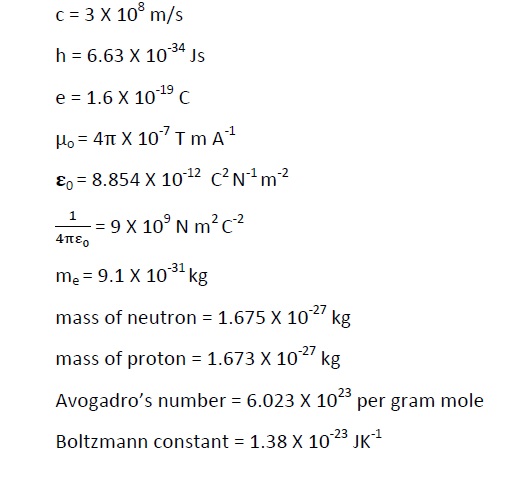
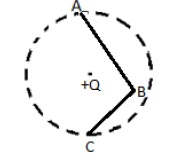
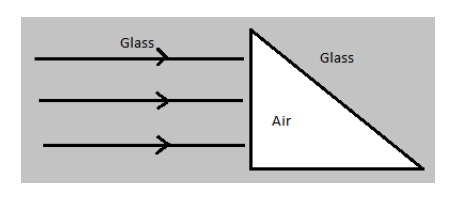
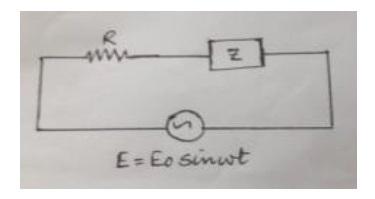
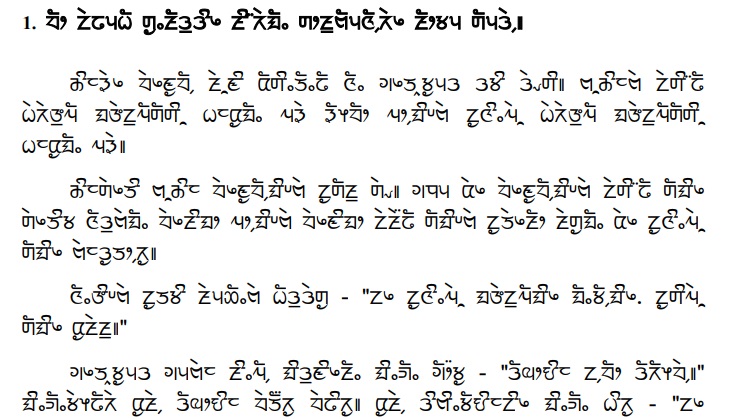
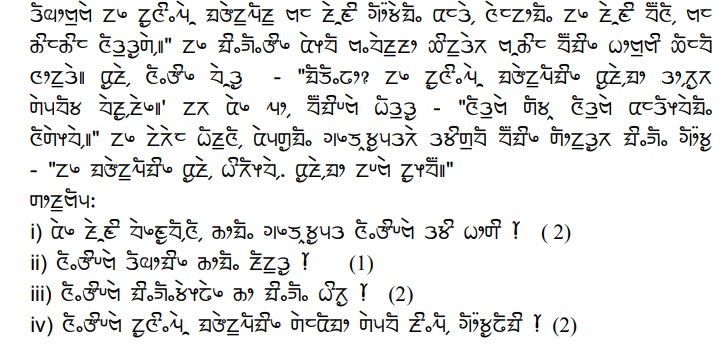

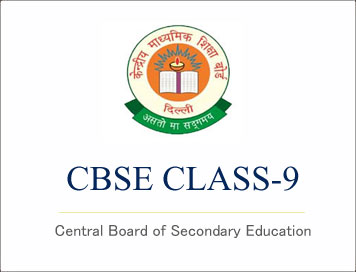
No comments:
Post a Comment